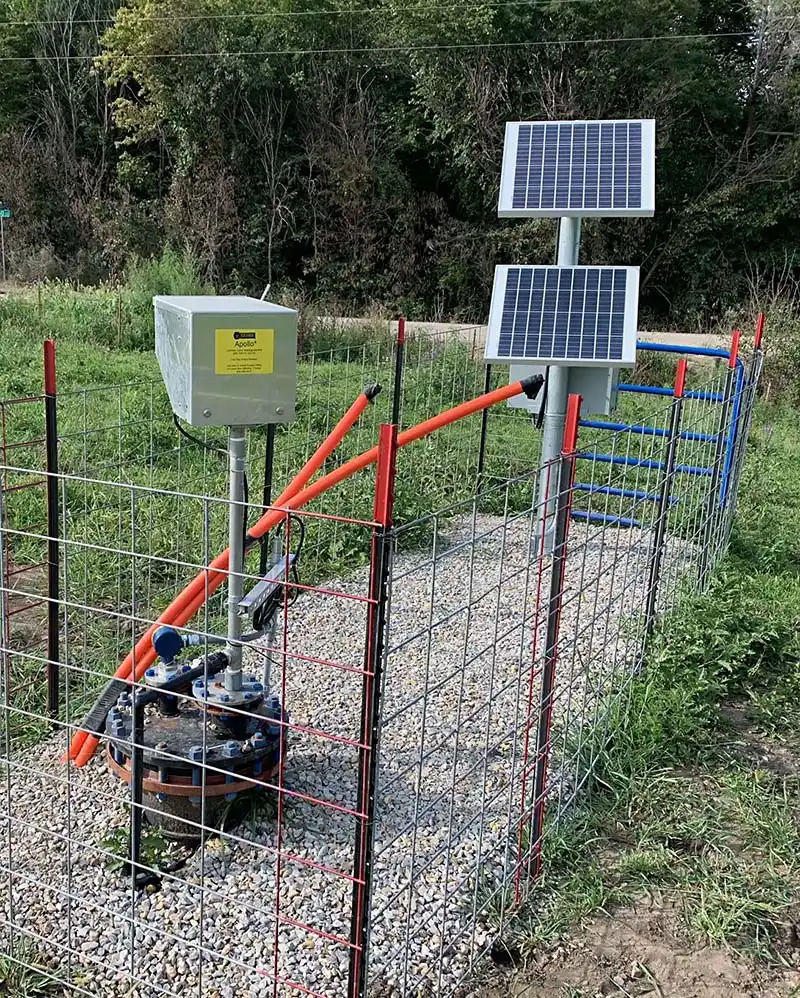One small but important step in the process was removing the watery fluid produced in the gaseous conversion and collected in several dozen underground sumps.
The project’s sumps were not served by trenched pneumatic or electric power. And with both Smithfield and RAE committed to zero-emission goals, the question was how best to pump the sumps.
Solar-Powered Pumps
The answer was Blackhawk’s Apollo Solar Piston Pump™, a simple, non-polluting, durable and cost-effective model that pumps virtually anything that flows. Site engineers installed on-off level-controls that allowed the Apollos to pump to sump bottom.
The pump consists of three components:
- The piston-pump downhole, patterned after oilfield pump jacks, the industry standard for reliability
- The above-well driver, with only four moving parts
- The solar panels, which does not emit onsite greenhouse gases. And solar power is free.
Results
Site managers report that the Apollos have proven efficient and dependable in the RNG application, with no carbon emissions and easy servicing, with no pump pulling required.
The RNG gas produced by the project is pipeline quality and is being provided to users.
“Blackhawk is at the forefront of developing new uses for reliable piston-pumping micro technology, from RNG to pipeline drip-leg sump,” Blackhawk principal Mark Bertane said. “We are excited to work with RAE, a world leader in evolutionary energy.”
Apollo top-head-drive piston pumps are available with solar, battery and AC-electric power options. Apollos can be customized with specialized materials of construction appropriate for site-specific requirements.
